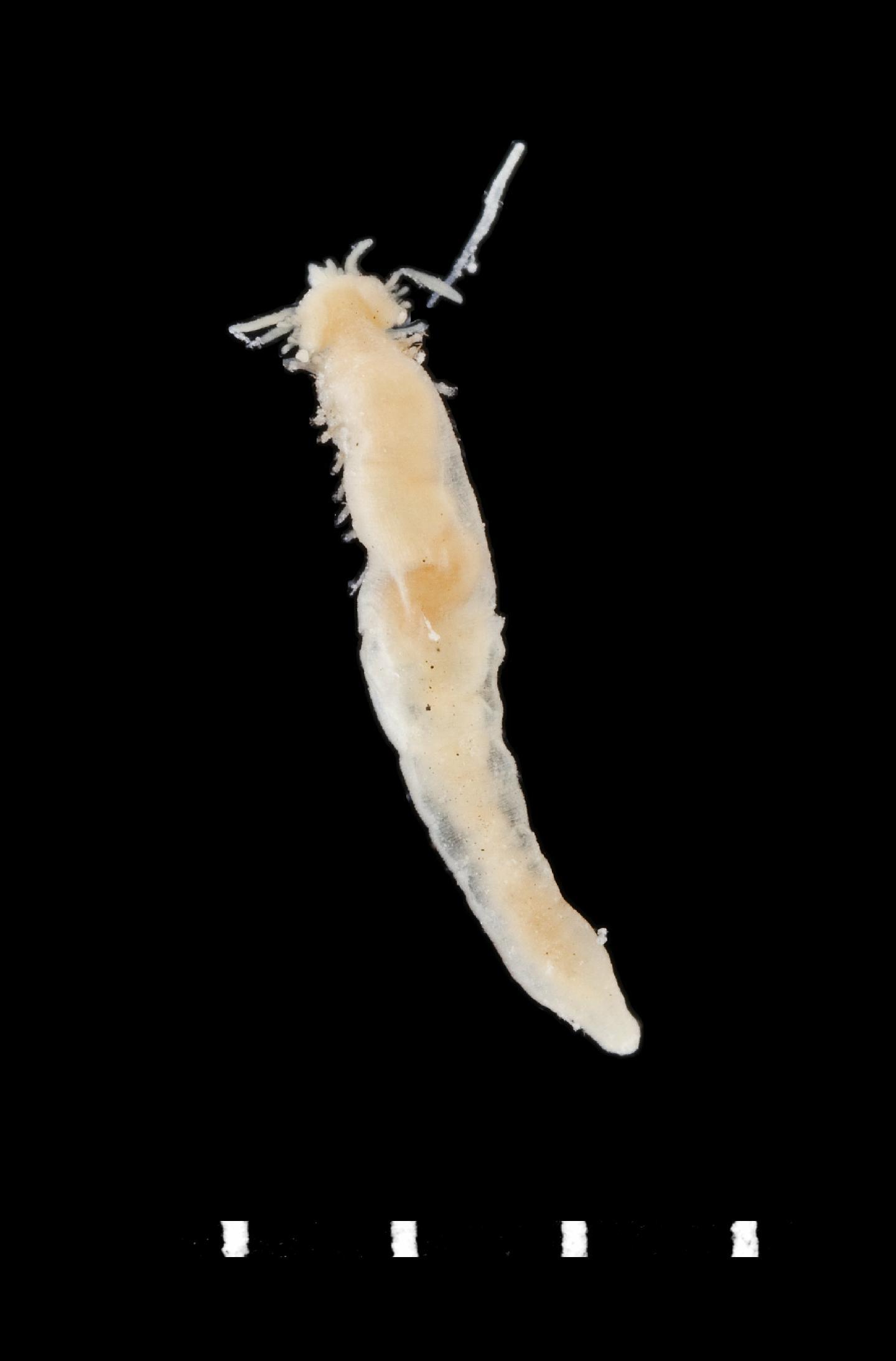WoRMS taxon details
Polycirrus disjunctus Hutchings & Glasby, 1986
330871 (urn:lsid:marinespecies.org:taxname:330871)
accepted
Species
marine, brackish, fresh, terrestrial
recent only
Hutchings, Patricia A.; Glasby, Christopher J. (1986). The Polycirrinae (Polychaeta: Terebellidae) from Australia. <em>Records of the Australian Museum.</em> 38(6): 319-350., available online at http://doi.org/10.3853/j.0067-1975.38.1986.185
page(s): 336-338, figs. 7d-l, 12D, table 1 [details] Available for editors [request]
[request]
page(s): 336-338, figs. 7d-l, 12D, table 1 [details] Available for editors
Holotype AM W199632, geounit New South Wales
, Note Solitary Island [South West Solitary Island,...
Holotype AM W199632, geounit New South Wales [details]
From editor or global species database
Type locality Solitary Island [South West Solitary Island, according to OZCAM database], New South Wales, Australia (29°56'S, 153°25'E) [provided geocoordinates seem to be misplaced, OZCAM states -30.216°, 153.266°]. [details]
Depth range Intertidal to 15 m.
Distribution Australia: New South Wales.
Etymology "The specific name is derived from the latin disjunctus meaning separate, distinct, different, remote referring to the...
Depth range Intertidal to 15 m. [details]
Distribution Australia: New South Wales.
Distribution Australia: New South Wales. [details]
Etymology "The specific name is derived from the latin disjunctus meaning separate, distinct, different, remote referring to the...
Etymology "The specific name is derived from the latin disjunctus meaning separate, distinct, different, remote referring to the separate occurrence of the two types of setae, one from the anterior and one from subsequent notopodial fascicles" (Hutchings & Glasby, 1986: 338). [details]
Read, G.; Fauchald, K. (Ed.) (2024). World Polychaeta Database. Polycirrus disjunctus Hutchings & Glasby, 1986. Accessed through: World Register of Marine Species at: https://www.marinespecies.org/aphia.php?p=taxdetails&id=330871 on 2024-04-16
Date
action
by
![]() The webpage text is licensed under a Creative Commons Attribution 4.0 License
The webpage text is licensed under a Creative Commons Attribution 4.0 License
original description
Hutchings, Patricia A.; Glasby, Christopher J. (1986). The Polycirrinae (Polychaeta: Terebellidae) from Australia. <em>Records of the Australian Museum.</em> 38(6): 319-350., available online at http://doi.org/10.3853/j.0067-1975.38.1986.185
page(s): 336-338, figs. 7d-l, 12D, table 1 [details] Available for editors [request]
[request]
additional source Glasby, Christopher J.; Hutchings, Patricia A. (2014). Revision of the taxonomy of <em>Polycirrus</em> Grube, 1850 (Annelida: Terebellida: Polycirridae). <em>Zootaxa.</em> 3877(1): 1-117., available online at https://doi.org/10.11646/zootaxa.3877.1.1
page(s): 48, fig. 23a-i, table 1 [details] Available for editors [request]
[request]
page(s): 336-338, figs. 7d-l, 12D, table 1 [details] Available for editors
additional source Glasby, Christopher J.; Hutchings, Patricia A. (2014). Revision of the taxonomy of <em>Polycirrus</em> Grube, 1850 (Annelida: Terebellida: Polycirridae). <em>Zootaxa.</em> 3877(1): 1-117., available online at https://doi.org/10.11646/zootaxa.3877.1.1
page(s): 48, fig. 23a-i, table 1 [details] Available for editors
 Present
Present  Present in aphia/obis/gbif/idigbio
Present in aphia/obis/gbif/idigbio  Inaccurate
Inaccurate  Introduced: alien
Introduced: alien  Containing type locality
Containing type locality
Holotype AM W199632, geounit New South Wales [details]
Paratype AM W199633, geounit New South Wales [details]
Paratype AM W199634, geounit New South Wales [details]
Paratype USNM 098822, geounit New South Wales [details]
From editor or global species database
Depth range Intertidal to 15 m. [details]Distribution Australia: New South Wales. [details]
Etymology "The specific name is derived from the latin disjunctus meaning separate, distinct, different, remote referring to the separate occurrence of the two types of setae, one from the anterior and one from subsequent notopodial fascicles" (Hutchings & Glasby, 1986: 338). [details]
Habitat Rocky substrata, associated with ascidians, and also on algal mat exposed to surf, intertidal to shallow subtidal. [details]
Holotype Deposited at the Australian Museum, Sydney (AM W199632). [details]
Type locality Solitary Island [South West Solitary Island, according to OZCAM database], New South Wales, Australia (29°56'S, 153°25'E) [provided geocoordinates seem to be misplaced, OZCAM states -30.216°, 153.266°]. [details]
